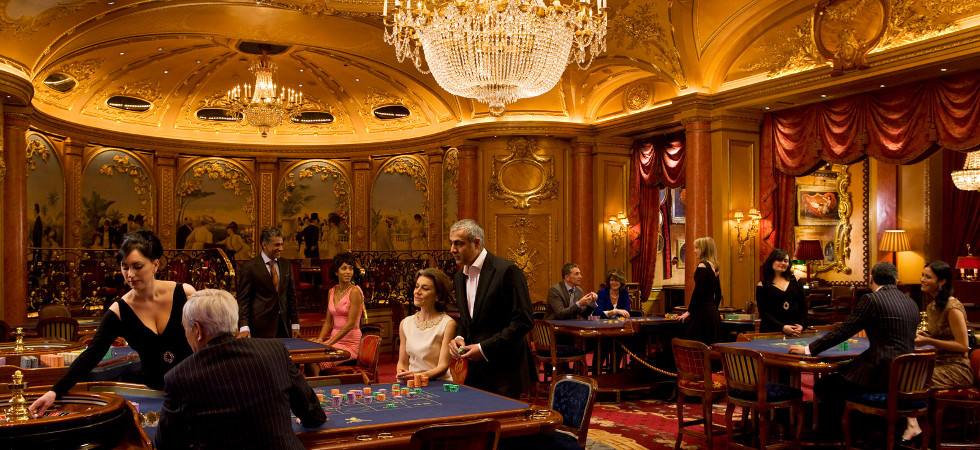
Gambling games have long captivated human interest, drawing players into a realm filled with fortune, tactics, and the allure of thrill. Each experience is carefully crafted not just for entertainment, but also to elicit specific emotional responses that keep gamblers involved and interested. Understanding the reasons behind these designs reveals much about how human psychology plays a crucial role in the gaming experience.
From the vivid lights and lively sounds to the complex layering of rules and incentives, casino games are designed to create an atmosphere of excitement and expectation. Game designers leverage behavioral strategies to influence player behavior, whether through the use of jackpots, almost wins, or social interactivity. By examining these elements, we can better appreciate how casino games fulfill not just a desire for entertainment, but underlying psychological needs for thrill and uncertainty.
Grasping Gamer Behavior
Casino games are designed with a deep understanding of player psyche, which is crucial for drawing in and retaining players. The thrill of the game, combined with the anticipation of winning, produces a powerful allure. Game designers make use of elements like sonic elements, vibrant graphics, and immersive gameplay to engage attention and generate emotional responses. These sensory effects enhance the total environment, making players feel more invested in the game.
Another notable aspect of player behavior is the idea of risk and reward. Casino games often balance risky situations with the potential for substantial rewards, which can cause the event known as near-miss phenomenon. When players come close to winning, the brain secretes dopamine, bolstering their behavior and motivating them to keep playing in search of that hard-to-reach win. This cycle of anticipation and disappointment plays a critical role in how games are constructed and advertised.
Lastly, social factors also play a critical role in player behavior at casinos. Many games are crafted to be played in pairs or in company with other players, creating a sense of belonging and collective experience. The social interaction inherent in games like poker enhances enjoyment and can culminate in prolonged gaming periods. Designers take advantage on this by designing environments that encourage players to remain, interact, and revisit, making the overall casino experience more appealing.
The Role of Visuals and Audio
Imagery and audio play a crucial role in enhancing the player’s experience within gambling games. Designers utilize bold colors, striking graphics, and engaging animations to capture players’ attention and maintain their interest. The use of motifs, such as adventure or opulence, helps create an immersive atmosphere that transports players into another world. By connecting to the senses, these elements contribute to a intensified emotional response, prompting players to interact more deeply with the games.
Sound design is equally important in reinforcing the overall experience of gambling games. The combination of ambient music, audio effects for winning combinations, and ambient noises creates an sound landscape that holds players fascinated. Sounds associated with wins, such as chiming bells or festive music, evoke feelings of excitement and reward, prompting players to continue playing. These sound cues are carefully placed to enhance the thrill of the game and create a more engaging experience.
Moreover, the alignment of imagery and sound is important for supporting the game’s overall theme and mood. Each element should coordinate seamlessly to create a unified experience that pulls players in. The effective use of this integration not only enhances user satisfaction but also boosts the chances of repeat play, as players become more invested in the captivating world that the gambling games offer. This thoughtful combination of visuals and sound ultimately enhances player engagement and loyalty.
Incentive Systems and Participation
The design of casino games significantly depends on incentive structures to ensure players engaged and coming back for additional experiences. These systems are based in behavioral theories that exploit human behavior and desire. Players are often motivated by the excitement of winning, which is supported by immediate feedback through the game’s mechanics. This prompt satisfaction not only enhances the gaming experience but also cultivates a feeling of success, encouraging players to continue playing in hopes of greater rewards.
Gaming establishments adopt various reward structures, including jackpots, bonuses, and multipliers, to engage participants. These features create a layer of thrill that maintains engagement. Additionally, the unpredictability of outcomes plays a significant role in keeping attention. The variable reward system, where wins are random but occur often enough, maintains participants on edge and motivated to keep playing. This loop of anticipation and anticipation is essential to the effectiveness of casino games.
In addition, community aspects, such as competitive events and collaborative options, enhance the participation factor by tapping into the competitive nature of players. The communal aspect of gaming with fellow participants can amplify the thrill of winning and create a sense of community within the gaming space. By combining these community elements with efficient incentive structures, casino games don’t just offer entertainment but also nurture a deeper connection among participants, reinforcing their loyalty to the gaming experience. Karachi 777
